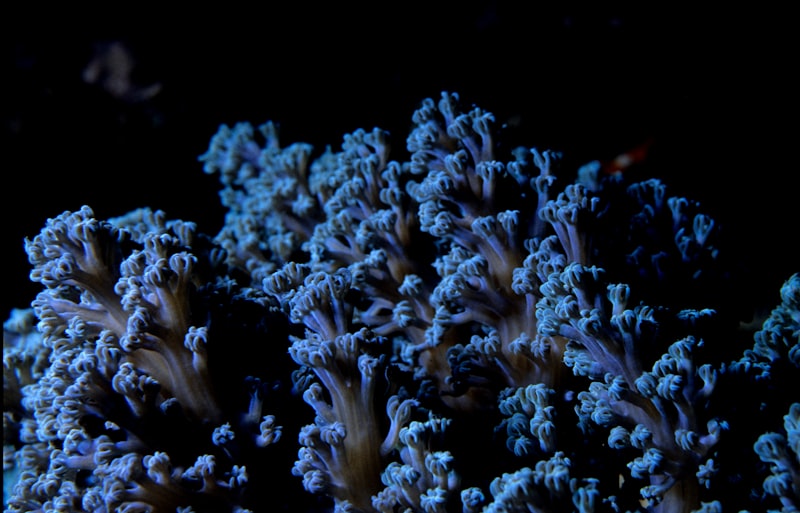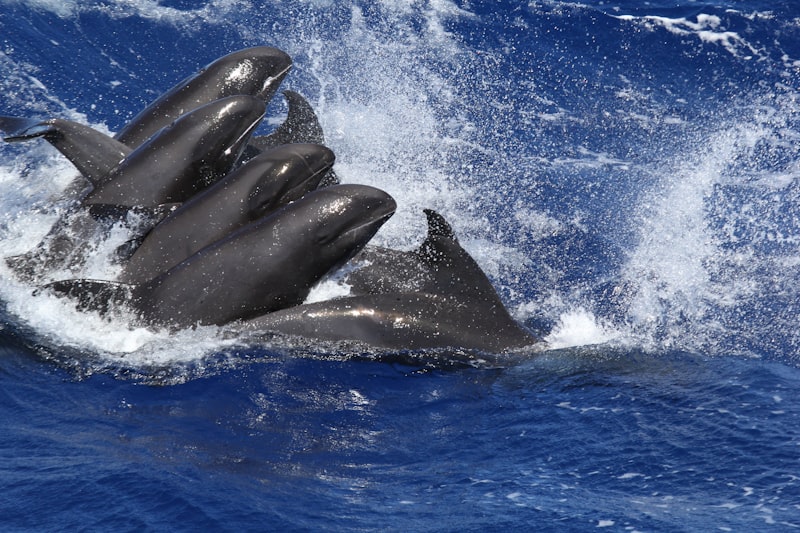Have you ever wondered about the hidden wonders beneath the ocean’s surface? Coral reefs, the ultimate underwater cities, are not just breathtaking but also crucial ecosystems that support a staggering variety of marine life. Let’s dive into the world of the most fascinating coral reefs and discover their awe-inspiring beauty.
One of the most renowned coral reefs is the Great Barrier Reef, stretching over 2,300 kilometers off the coast of Australia. Imagine a living structure so vast it can be seen from space! This reef is not only a hotspot for divers and snorkelers but also a UNESCO World Heritage site teeming with colorful corals and marine creatures.
Moving to the Pacific, the Coral Triangle holds the title for the ultimate biodiversity hotspot. Encompassing waters around Indonesia, Malaysia, the Philippines, Papua New Guinea, Timor-Leste, and the Solomon Islands, this region boasts the highest diversity of corals and fish species on the planet. It’s like a bustling metropolis underwater, where every corner hides a new species waiting to be discovered.
In the Caribbean, the Belize Barrier Reef Reserve System stands out as a testament to nature’s creativity. This reef complex, the largest in the Northern Hemisphere, is a playground of underwater caves, mangrove forests, and crystal-clear waters. Snorkelers and divers flock here to witness its vibrant coral formations and encounter creatures like the gentle manatees.
Heading to the Indian Ocean, the Maldives offer a glimpse into a paradise of coral atolls. These ring-shaped reefs encircle turquoise lagoons, creating a picture-perfect setting straight out of a postcard. The Maldives reefs are not just beautiful; they provide essential protection to the islands against ocean currents and storms.
Lastly, the Red Sea Coral Reef in Egypt astonishes with its unique ecosystem adapted to the warm and salty waters. Here, you can find intricate coral gardens and a myriad of fish species living in harmony. It’s a living masterpiece sculpted by millennia of natural processes.
Coral reefs are not just natural wonders; they are vital to the health of our oceans and the planet. They protect coastlines from erosion, provide habitats for countless species, and contribute to local economies through tourism and fisheries. As we marvel at their beauty, let’s also work together to conserve and protect these ultimate marine treasures for generations to come.
Discovering the Hidden Wonders: The World’s Most Fascinating Coral Reefs
Imagine snorkeling off the coast of Belize, where the Belize Barrier Reef stretches over 190 miles, showcasing an array of coral formations teeming with life. Each reef, like an underwater metropolis, hosts an intricate community of fish, crustaceans, and other creatures, creating a bustling underwater cityscape.
In the Pacific Ocean, the Great Barrier Reef of Australia astonishes with its sheer size, stretching over 1,400 miles. Here, a kaleidoscope of corals—like living sculptures—thrives in warm, clear waters. This reef system is not only a UNESCO World Heritage site but also a testament to nature’s artistry and resilience.
Heading west to the waters of Indonesia, the Coral Triangle boasts the highest diversity of marine species globally, encompassing reefs in Malaysia, the Philippines, and Papua New Guinea. This biodiversity hotspot supports over 600 types of corals alone, along with countless fish species, making it a mecca for marine biologists and eco-tourists alike.
Coral reefs, however, face threats from climate change, pollution, and overfishing, endangering these fragile ecosystems. Despite these challenges, conservation efforts worldwide strive to preserve and restore these irreplaceable marvels of nature.
Jewels of the Ocean: Exploring Earth’s Most Stunning Coral Reefs
Imagine diving into a world where colors dance and life flourishes in harmony – that’s the allure of coral reefs, Earth’s underwater wonders. These vibrant ecosystems, often called the “jewels of the ocean,” are not just visually stunning but crucial to marine biodiversity. Stretching across continents, from the Great Barrier Reef in Australia to the Coral Triangle in Southeast Asia, each reef offers a unique tapestry of life.
The Great Barrier Reef, visible even from space, spans over 2,300 kilometers and hosts an astounding variety of marine species. Its kaleidoscope of corals, from branching to table-shaped, creates an underwater city bustling with activity. In contrast, the Maldives’ coral reefs epitomize serenity with their turquoise waters and intricate lagoons, ideal for snorkeling adventures.
Closer to home, the Caribbean’s reefs beckon with their warm waters and vibrant coral gardens. Picture yourself swimming alongside parrotfish and angelfish, amidst intricate coral formations that have evolved over centuries. These reefs not only captivate with their beauty but also serve as crucial habitats for marine life, protecting coastlines and supporting fisheries.
However, these delicate ecosystems face threats, from climate change-induced coral bleaching to pollution and overfishing. Each challenge underscores the urgency of conservation efforts aimed at preserving these natural wonders for future generations. Through sustainable tourism and marine protected areas, initiatives strive to safeguard coral reefs while educating visitors about their ecological importance.
In essence, coral reefs are not just destinations; they are living organisms that inspire awe and wonder. Their resilience and intricate beauty remind us of nature’s delicate balance and the need to protect it. Whether exploring the depths of the Red Sea or marveling at the biodiversity in the Pacific, every encounter with coral reefs leaves a lasting impression, a testament to the oceans’ unparalleled splendor.
Untold Stories of Resilience: Unveiling The World’s Most Fascinating Coral Reefs
Imagine a world beneath the waves where vibrant colors and intricate structures come alive—a world where resilience is not just a survival strategy but an art form. Welcome to the untold stories of resilience found in the world’s most fascinating coral reefs.
These underwater marvels, scattered across the globe like nature’s hidden treasures, defy the odds with their ability to thrive in some of the planet’s most challenging environments. From the crystal-clear waters of the Maldives to the nutrient-rich seas of Australia’s Great Barrier Reef, each coral reef tells a tale of adaptation and survival against formidable odds.
What makes these reefs so captivating isn’t just their beauty, but their resilience in the face of adversity. Picture a delicate ecosystem teeming with life—schools of colorful fish darting among swaying corals, while graceful sea turtles glide effortlessly through the water. It’s a symphony of biodiversity, intricately woven together over centuries.
But behind this serene facade lies a story of struggle and endurance. Coral reefs endure threats from climate change, pollution, and overfishing, yet they continue to persist—a testament to their remarkable resilience. Like a phoenix rising from the ashes, reefs can recover from bleaching events and cyclones, rebuilding their vibrant communities with astonishing tenacity.
Take the Coral Triangle, for instance—a biodiversity hotspot spanning the waters of Indonesia, Malaysia, Papua New Guinea, the Philippines, Solomon Islands, and Timor-Leste. Here, coral reefs not only support millions of people who depend on them for food and livelihoods but also harbor species found nowhere else on Earth. It’s a hotspot of resilience, where communities and ecosystems coexist in delicate balance.
As we uncover the untold stories of these resilient coral reefs, one thing becomes clear: their survival is intertwined with our own. By understanding and protecting these fragile ecosystems, we not only preserve natural wonders but also safeguard the future of generations to come. So, the next time you marvel at the beauty of a coral reef, remember the untold stories of resilience that lie beneath the surface—stories waiting to be discovered and shared with the world.
From Australia to Belize: Dive Into The World’s Most Fascinating Coral Reefs
Australia’s Great Barrier Reef is synonymous with natural beauty on an epic scale. Stretching over 2,300 kilometers, it’s the largest coral reef system globally and a UNESCO World Heritage site. Picture yourself snorkeling amidst a kaleidoscope of coral formations teeming with exotic fish and marine life. It’s like stepping into a living, breathing ecosystem that has evolved over millions of years.

Belize, on the other hand, offers a more intimate yet equally mesmerizing coral reef experience. The Belize Barrier Reef Reserve System is a UNESCO site too, known for its incredible biodiversity. As you plunge into its warm Caribbean waters, you’ll encounter intricate coral gardens bustling with life. Snorkelers and divers often find themselves surrounded by graceful sea turtles, playful dolphins, and rays gliding effortlessly through the azure depths.
What makes these coral reefs truly special is not just their beauty but also their ecological importance. Coral reefs support a quarter of all marine species, acting as crucial nurseries for fish and other marine life. They are also vital for protecting coastlines from erosion and storms, making them invaluable natural assets.

Both Australia and Belize have taken significant steps to conserve their coral reefs. Efforts include marine protected areas, sustainable tourism practices, and coral restoration initiatives. By visiting responsibly, travelers can contribute to these conservation efforts and ensure these underwater wonders thrive for future generations.
So, whether you’re a seasoned diver or a curious snorkeler, Australia and Belize promise an unforgettable journey into the heart of the world’s most fascinating coral reefs. Prepare to be amazed as you discover the vibrant colors, diverse marine life, and the sheer magnificence of these underwater worlds.
Ecosystems Underwater: Unraveling The Beauty of Coral Reefs Around the Globe
Imagine a bustling city beneath the waves, where vibrant colors and intricate structures create a bustling metropolis. Coral reefs are exactly that – bustling with life and color. These marine structures, built over thousands of years by tiny coral polyps, form the foundation of a complex ecosystem that supports a quarter of all marine species. From the Great Barrier Reef in Australia to the Coral Triangle in Southeast Asia, each reef boasts its own unique charm and biodiversity.
What makes coral reefs so breathtaking is their kaleidoscope of colors. Picture a palette of blues, greens, purples, and every shade in between, as corals of different species and algae coexist in harmony. This vibrant display not only captivates divers and snorkelers but also serves a crucial function in the marine food web.
Beyond their aesthetic appeal, coral reefs are vital for the survival of countless marine species. They provide shelter, breeding grounds, and feeding areas for fish, mollusks, and other sea creatures. Moreover, these reefs act as natural barriers, protecting coastlines from erosion and storm surges. In essence, coral reefs are the guardians of our shores, silently safeguarding both marine and human communities.
However, despite their resilience, coral reefs face unprecedented threats today. Climate change, ocean acidification, pollution, and overfishing pose significant risks to their survival. As temperatures rise and ocean chemistry changes, corals struggle to adapt, leading to widespread bleaching events and decline in reef health.
Yet, amidst these challenges, there is hope. Conservation efforts, sustainable tourism practices, and marine protected areas play a crucial role in safeguarding these fragile ecosystems. By raising awareness and taking concrete actions, we can ensure that future generations continue to marvel at the beauty of coral reefs.
Beyond the Waves: Captivating Tales of The World’s Most Fascinating Coral Reefs
Imagine a world beneath the waves where colors dance and life thrives in unexpected ways. Coral reefs, often called the rainforests of the sea, are not just underwater structures but bustling ecosystems teeming with diversity. These natural wonders, found in tropical waters around the globe, hold stories of resilience, beauty, and interconnectedness.
In the shallow waters of Australia’s Great Barrier Reef, the largest coral reef system on Earth, lies a tapestry of life so vast it can be seen from space. Here, vibrant corals shelter a myriad of marine creatures, from tiny clownfish darting playfully among anemones to majestic green sea turtles gliding gracefully through the azure waters. Each coral head is a city unto itself, hosting a complex community of fish, crustaceans, and mollusks, all intricately linked in a delicate balance.
Venture to the Maldives, where coral atolls form ring-shaped islands fringed with turquoise lagoons. These remote reefs, far from human habitation, offer a glimpse into a pristine underwater world where coral formations resemble intricate sculptures carved by nature’s hand. Snorkelers and divers alike are mesmerized by the kaleidoscope of colors—corals in shades of pink, purple, and gold, shimmering under the tropical sun.
In the Caribbean, the Belize Barrier Reef Reserve System stretches over 190 miles, a UNESCO World Heritage site celebrated for its biodiversity. Here, coral gardens flourish alongside mangrove forests, providing vital habitats for endangered species like the West Indian manatee and hawksbill turtle. Beneath the surface, the reef buzzes with activity as parrotfish crunch on coral, contributing to the reef’s continuous growth and evolution.
Frequently Asked Questions
Where can I find the most beautiful coral reefs in the world?
Discover the world’s most stunning coral reefs and their locations, offering vibrant marine ecosystems and breathtaking underwater landscapes.
How can I help protect coral reefs?
Learn how you can contribute to coral reef protection through sustainable practices such as reducing carbon emissions, avoiding harmful chemicals, supporting responsible tourism, and participating in local conservation efforts.
What threats do coral reefs face today?
Discover the current threats facing coral reefs today and learn how these fragile ecosystems are impacted by factors such as climate change, pollution, overfishing, and coastal development.
What are coral reefs and why are they important?
Coral reefs are diverse underwater ecosystems built by tiny coral animals. They are vital for biodiversity, providing habitats for numerous marine species. Coral reefs also protect coastlines from erosion and storms, support fisheries, and contribute to tourism economies.
How do coral reefs benefit marine life?
Discover how coral reefs benefit marine life through providing habitat, protecting coastlines, and supporting biodiversity. Learn about their crucial role in ecosystems and their impact on global marine biodiversity.


